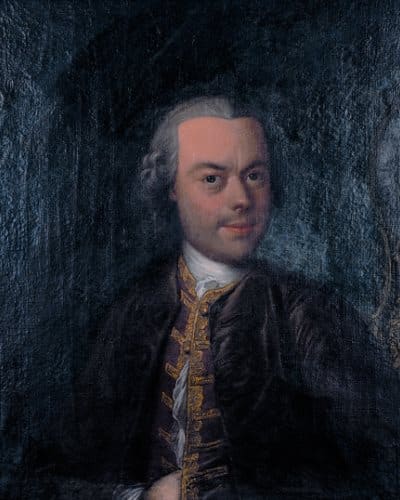Celebrated especially for the expression of free philosophical and scientific thought, the Age of Enlightenment was also that of the entry of watchmaking into modernity. This entrance, as discreet in its form as it is devastating in its implications, was superbly embodied by the famous clockmaker Pierre Jaquet-Droz. Herald of precision mechanics and picky genius, he will have fascinated Europe with his famous automatons, almost as alive as their models.
An “improver” rather than a creator
As skilful as it is meticulous, Pierre Jaquet-Droz has become known in the world of watchmaking for his extraordinary ability to improve – not to sublimate – the mechanisms created by others. Man has elevated ornamentation and refinement to the rank of art, by adapting chimes, flute sets, musical boxes or tiny automatons to clocks and watches, transforming existing pieces to suit his fantasy, to make them ever more original and mysterious.
Without having conceived, as such, innovative mechanisms, Jaquet-Droz has nevertheless attracted the attention of the world’s greatest (and a wealthy clientele) by offering more attractive timepieces, more in tune with tastes artistic time. Avant-garde, Jaquet-Droz set out to develop an aesthetic reflection around his work of ornamentation, thus designing works of art rather than clocks, unique pieces made on demand by his opulent clients.
In the absence of innovating himself, Pierre Jaquet-Droz helped to make known the creations of his contemporaries, in particular Jean-Antoine Lépine‘s suspended bridge caliber, self-winding watches, the device of watches without keys. or the principle of decorating the exterior of luxury timepieces.
There is, however, one area in which the Jaquet-Droz, father and son, have acquired a reputation as inventors of genius: that, still stammering, automata. Admittedly, the automaton was not a new fact in the eighteenth century: the stirring characters designed by Leonardo da Vinci two centuries ago are the proof. But the automatons of the Jaquet-Droz were very different, because animated by a mechanism of great precision – the hallmark of the watchmaker. Between 1767 and 1774, they made three particularly surprising protagonists: the writer, the musician and the draftsman.
A famous anecdote reveals both the talent of Pierre Jaquet-Droz to create automatons and his facetious side, the characteristic of a genius who knows how to have fun through his work. In 1758, after a long drive to the court of the King of Spain, he presented to Ferdinand VI a beautifully ornamented clock. On it were placed three little characters, including a shepherd and his dog, who, at the moment when the clock struck the hour, became animated to play the flute and bark. But the barking of the animal was so realistic that it caused the courtiers to escape from the room … and reacted, in return, to the king’s own dog!
The lives and clocks of Pierre Jaquet-Droz
Pierre Jaquet-Droz was born in Switzerland, in the town of La Chaux-de-Fonds, in 1721. Very early, encouraged by his family, he showed a certain inclination for clocks, whose ticking nourished his taste for the precision. After studying at the universities of Basel and Neuchâtel (mathematics, physics and theology), the young man integrates an apprenticeship in watchmaking, thus returning to his first love.
It is in Paris, where he settled in the 1740s, that Jaquet-Droz specializes in improving timepieces. He transforms the pieces to his liking, adding here a miniature automaton, there a decorative ornamentation, again a carillon; the orders flock and his pieces, metamorphosed over his fingers fairy, become collectibles. After the death of his wife and daughter in 1755, he took his son Henry-Louis under his wing and had him work at his side at the workshop. Together, they will produce the most incredible automatons ever seen.
A passage through the court of the king of Spain propels the career of Pierre Jaquet-Droz, making it known throughout Europe. Introduced by the governor of the Principality of Neuchâtel, he embarks six of his creations aboard a cart and takes the road to Madrid. In addition to the aforementioned episode of the dog automaton, the watchmaker impressed enough Ferdinand VI to buy him all the pieces he brought with him. On his return to Switzerland in 1759, he gained an outstanding reputation throughout southern Europe.
This is the starting point of a new life – and a vast commercial expansion. Associated with his son, Pierre Jaquet-Droz opened in 1774 a workshop in the heart of London, which he entrusted management to Henry-Louis: this is the first step. The industrial, scientific and commercial dynamism of the British capital radiates throughout Europe, attracting the most advanced inventors and technicians. The second step, made possible with the help of Jean-Frédéric Leschot, the other associate of the family, is to extend their fame to the Far East: first in China, at the Emperor’s court in Beijing , which imports watches and clocks estam


 Français
Français